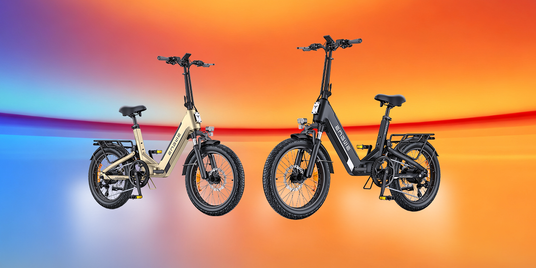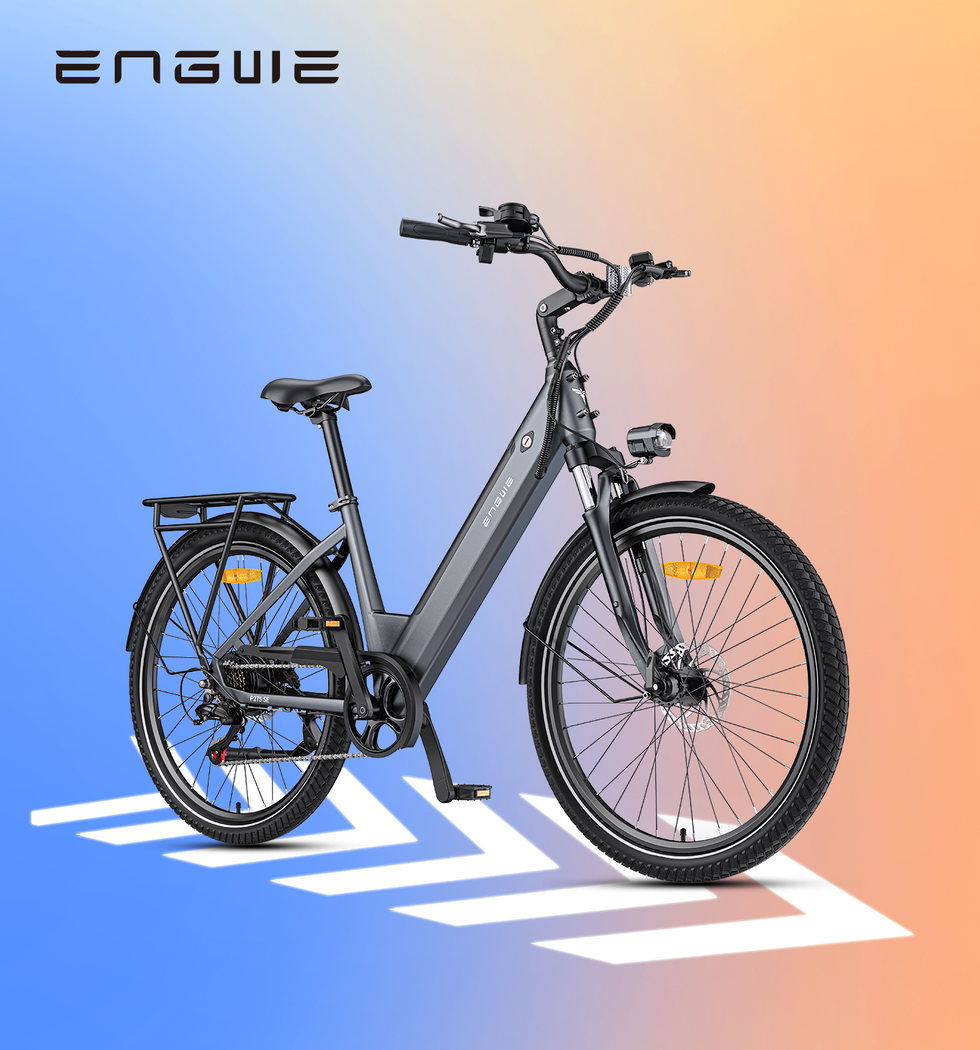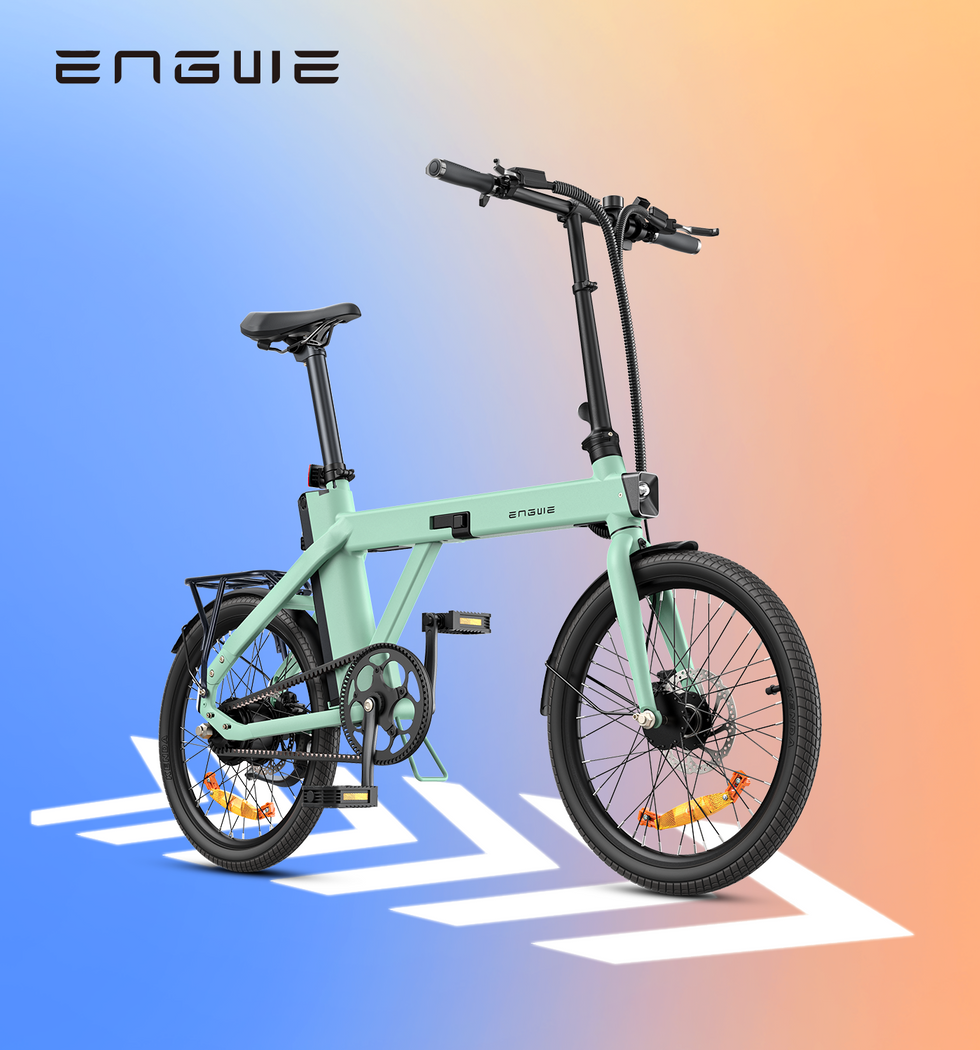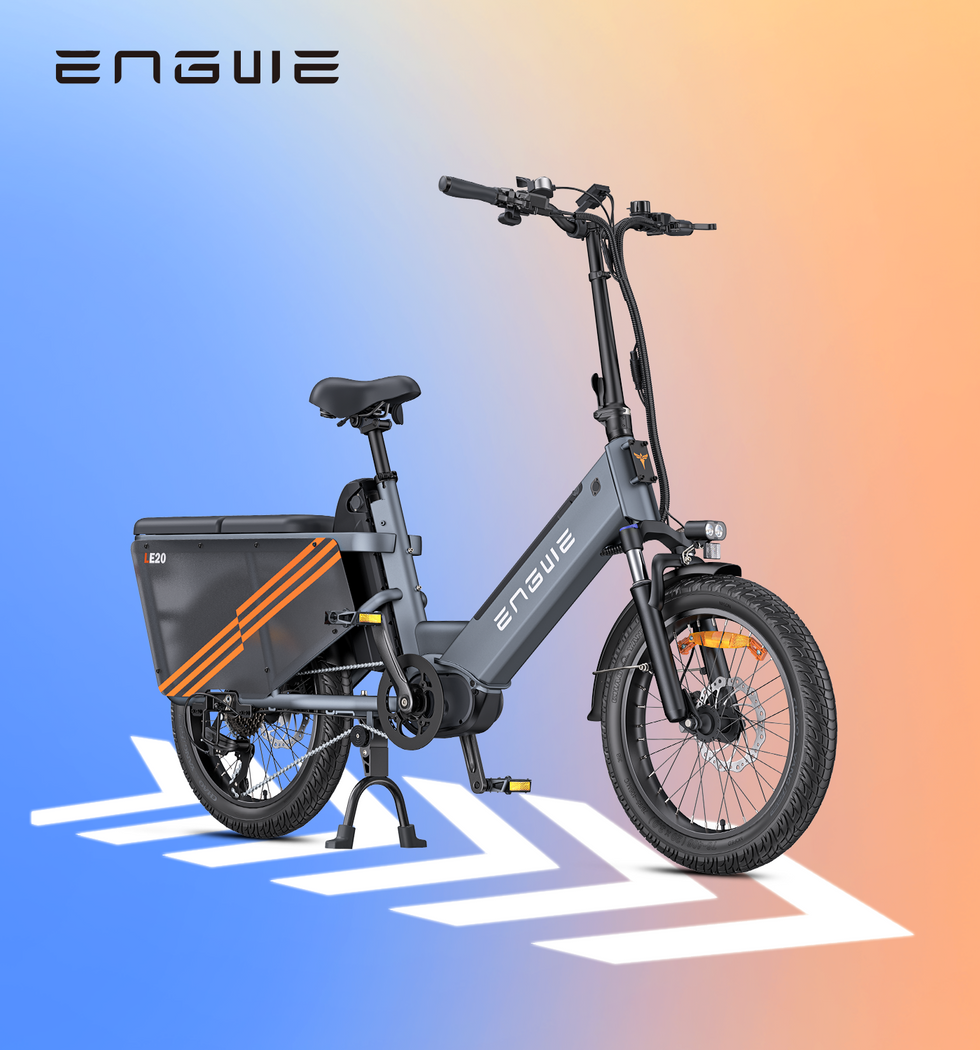What Makes an E-bike Best for Food Delivery?
Your electric bike is not just a vehicle, but a partner in business, a workhorse and the one, single tool that defines how much earnings you could make in a day. Choosing the right one makes a difference between lost earnings, frustration, and sheer physical exhaustion. Select the right one and you’ll make more deliveries an hour, put less stress on your body and see a healthier bank balance at the end of the month. So what actually makes an e-bike the best for food delivery? It is not a matter of flashy gadgets or top-end pace. It’s about a handful of things that are long overdue. You want a machine that’s been designed for strength, durability, and a functional, practical application. This guide breaks down what you should consider, and from the perspective of someone who knows that every moment you’re not on your bike is money not in your pocket.
But before we get into the nitty-gritty, what does a delivery rider actually need? It’s not a lazy weekend drive; it’s a high-stakes, stop-and-go marathon, often in difficult weather and traffic. The priorities are not the same and understanding the priorities is the first step in being a smart investor.
| Rider’s Problem/Need | Key E-bike Feature to Solve It | Why It’s Key for Delivery Work |
|---|---|---|
| Range anxiety is the fear that a vehicle has insufficient charging resources to reach its destination. | High specific energy density battery with a possible option of a dual battery. | Your shift is over when the battery dies. An enormous range means you can work later/longer or take more orders and get a few more deliveries in during peak hours without having to stop and recharge. |
| Lugging around heavy and sometimes large food orders. | High payload capacity along with an integrated, sturdy rear rack. | You have to be able to transport many big orders and not sacrifice the overall balance and integrity of the bike. It just NEEDS to be able to carry a lot of weight (frame, wheels, rack). |
| Constant stop-and-go in city traffic. | A motor that can produce high torque and a responsive torque sensor. | Torque allows you to get up to speed quickly from a stop, which is especially important in the city to maneuver through traffic expeditiously and safely. Intuitive proportional power with a torque sensor that delivers smooth control proportional to your effort – save your battery for later. |
| Long hours in the saddle that lead to fatigue and pain. | Everything revolves around your comfort: upright riding position, triple-tree suspension fork, step-through frame. | A step-through frame is a godsend when you’re hopping on and off the bike dozens of times a shift. Suspension smooths out potholed pavement, saving your back and wrists from a punishing ride. |
| Rides in any weather, day or night. | Great safe features: strong hydraulic disc brakes, bright integrated lights and turn signals. | Hydraulic disc brakes provide consistent stopping in all weather conditions. The integrated lights make sure you are visible to other road users, and a key consideration for your safety if you are working after dark. |
| Reducing the downtime caused by mechanical problems. | Tough: solid frame, puncture-proof tyres. | An entire shift can be wrecked by a flat tire or mechanical failure. Puncture-proof tyres and strong overall build quality so you spend more time earning and less time on the side of the road. |
The Right Tool for the Job
In order to meet these criteria, this is where the classic consumer e-bike comes up short. For a specialised job like this, you need a specialised tool. And one such model which has been engineered to meet these arduous expectations is the ENGWE LE20. This cargo e-bike is not just repurposed to do deliveries; it feels purpose-built for it. Fortunately, its big selling point – supremely long range – is immense, with up to 350 km available with the dual battery model and capable of wiping out just about any range anxiety for those marathon shifts. It is powered by one or two 48V 19.2Ah lithium-ion batteries. The base is heavy duty: a 6061 aluminium alloy step-thru frame which can carry a maximum load of 200 kg and more load capacity on the rack so you can deliver more products. Power is controlled via a torque sensor and 75 Nm of torque is there for brisky acceleration. It’s got 180mm hydraulic disc brakes to keep you safe and in control – as well as an integrated front light and rear turn signals. Rider comfort is taken care of as well, with front suspension and 20x3.0in puncture-proof tyres to help iron out bumpy city streets. Topping it off, it offers so much more than the competition per 8-10 hours. It has a 50-mile range at up to 20 MPH and a 5-8 hour charge time. For the delivery professional, time is money; with the optional Semitronics® Fast Charger, charge time can be reduced to 2-3 hours, significantly less than the competition. The ENGWE LE20 is an all-inclusive solution to directly combat all of the core issues faced by a food delivery rider.

More than the model, it is important to know why such features exist. Let's talk about power. People often browse focused on the wattage of an e-bike motor (restricted by law to 250W for use on the public road in the UK, unless you’re at an officially exempted vehicle). The number which really counts for delivery riding is torque, stated in Newton-metres (Nm). Torque is the motor’s rotational force; it is what gets you moving from a standing start and what pulls you up a steep hill when you are supporting a heavy load. A high-torque (anything over 60 Nm is very nifty) bike will feel very responsive and powerful when you require some extra power, whether you’re pulling away from the lights or hitting the bottom of a hill. This is where a torque sensor wins hands down over a type that is nothing more than a cadence sensor. A cadence sensor sees only that you are pedalling and applies the same fixed power. A torque sensor gauges how hard you are pedalling and applies the motor’s assistance accordingly. This makes for a much more natural and intuitive riding experience; it also doesn’t jerk for acceleration but most importantly is far more efficient, which translates to you being able to extract every last km of your battery.

Comfort and Safety are Non-Negotiable
You don’t have the luxury of comfort in this one; comfort is a necessity that affects your work. Delivery is transformed with a step-through frame design, and you can take the box with you with front and rear cargo rack mounts. You get on and off your bike hundreds of times a week. Coming on and off the bike from a low step-through design rather than swinging one’s leg over a high crossbar both saves energy and makes things a lot easier and convenient—all the more with a load on the rear rack in the form of a large thermal bag. Front suspension, too, is not just for mountain bikes. Pocked full of potholes, lumps and dropped kerbs, our city streets are a battlefield for the otherwise intrepid urban cyclist. A suspension fork soaks up the bumps, eliminating the jarring impact you feel along your wrists, arms, and back. This makes a tremendous difference to your level of fatigue and physical well-being over an eight-hour shift. Rider comfort = Rider alertness and efficacy.
And lastly, never, ever, ever cut corners on safety. How much you can make will always come down to how good of a driver you will be. Brakes, whether car brakes, truck brakes, or any other type of vehicle brakes, are the single most important safety feature of any automobile. As for a professional-grade delivery e-bike? Hydraulic disc brakes feel mandatory. As opposed to less expensive mechanical disc or rim brakes, they have superior stopping power, require very little exertion, are vastly more consistent and work uniformly in the heaviest of rain. Because when you need that braking to be excellent and dependable, when a car suddenly pulls out in front of you, it is those solid, powerful brakes that count. Visibility is the second half of safety. A work bike used professionally needs bright integrated lights. This will mean a bright front headlight that is designed to light up the ground in front of you, but more importantly to be seen by oncoming traffic, and a rear light that makes you visible from behind. Adding rear turn signals in some models is a big step forward; it's easy to let traffic around you see you signalling intentions without removing a hand from the handlebars. Selecting the best electric bike is the most important investment you will make for your food delivery business.

Q&A: Being a Delivery Rider
1. What's the actual range I can expect to get on a charge?
The claimed range (like 180 km, single battery, or 350 km, dual battery, for the ENGWE LE20) is under ideal conditions – that’s using the least effort (PAS 1), on a flat, windless surface with a very light rider. In the real world of food delivery, under heavy loads, constant starting and stopping, hill climbing, and high-assist settings, your actual range will be less. But a bike with a very large battery capacity (measured in watt-hours, Wh) gives you a much bigger buffer. A high-quality battery should last an entire 8-10hr shift, even in harsh conditions, without the need to go back to charge. But you do need range anxiety to be gone, and the way you do that is by starting off with the biggest battery that you can buy.
2. How well do delivery e-bikes hold up?
Given your daily touring distance will dwarf a typical rider's, you need to ensure that you keep everything well-maintained. Before you set off on every shift, you do a quick check to make sure: your tyres are inflated, your brakes are working, and your lights are working. You should clean and lube your chain every week. Brake pads and the chain are the most likely to wear out quickly, due to the high mileage and stop-start nature of the work. Hydraulic brake pads will generally need to be replaced every couple of months. By staying on top of this basic maintenance schedule, you’ll avoid major, costly issues and stay on the road and keep earning.
3. Do you need a licence to do deliveries in the UK with an e-bike?
To be classed as an ‘electrically assisted pedal cycle’ (EAPC) in the UK, the bike must be fitted with pedals that can be used to propel it. The power of the motor should not exceed 250 watts continuous rated output and the motor shouldn’t be powered at all when the bike is travelling over 15.5 mph (25 km/h). Provided your e-bike fulfils these requirements you don’t need a licence, you don’t need to register it, and it doesn't need tax or insurance. You can ride it anywhere that you can ride a regular bicycle. All respected suppliers in the UK selling into this market are expected to be compliant.
4. Cargo e-bikes are heavy. Are they heavy and hard to maneuver?
Certainly, cargo e-bikes themselves, fitted with sturdy frames, substantial batteries, and powerful motors, are much, much heavier than regular bicycles – often weighing more than 35 kg. But this weight is nearly inconsequential once in the saddle. The additional weight is barely perceptible, as the electric motor gives its full assistance and it feels like nothing for the engine to get up and go. The extra mass – and the sturdier frame it requires – can actually help the bike feel more stable and planted on the road, particularly while under load or in a crosswind. You’ll only feel the weight if you’re having to lift the bike for any reason (like up a set of stairs).
5. What is a torque sensor, and why is it so much better for workaday deliveries?
A torque sensor is a device in your e-bike’s drivetrain that detects how hard you are pressing on the pedals. It instructs the motor to give you an appropriate amount of assistance: Pedal lightly, and you get a little help; pedal hard when going uphill, and you get a lot of help. This is quite different from a cheaper cadence sensor, which only knows whether you are pedalling or not. The result is a ride that somehow feels deliciously smooth and intuitive and natural, as if you have superhuman legs. There are two enormous benefits to this for delivery work. First of all, it offers a lot more control over the speed and acceleration of the bike, which is safer in varied traffic. Second, because the motor is always optimized to deliver exactly the right amount of power, it is also much more efficient, which can mean a whole lot more miles of getting around between charges.



